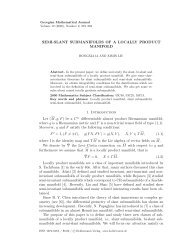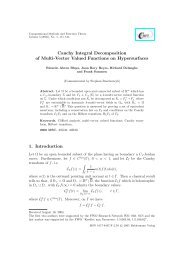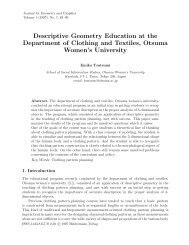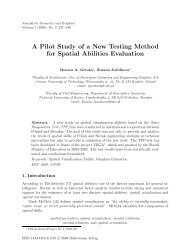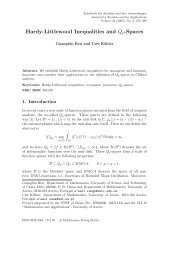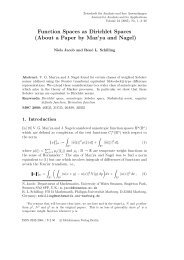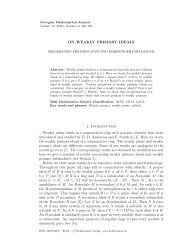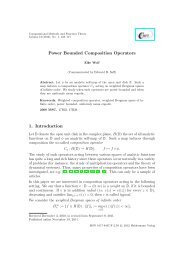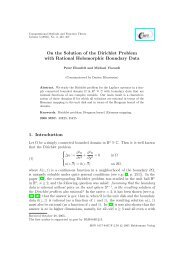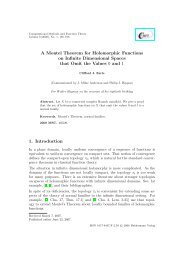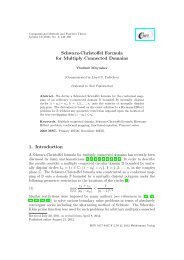COMPLETENESS THEOREMS FOR ELLIPTIC EQUATIONS OF ...
COMPLETENESS THEOREMS FOR ELLIPTIC EQUATIONS OF ...
COMPLETENESS THEOREMS FOR ELLIPTIC EQUATIONS OF ...
Create successful ePaper yourself
Turn your PDF publications into a flip-book with our unique Google optimized e-Paper software.
82 A. CIALDEA<br />
The first theorem of such a kind was proved by Gaetano Fichera in [7]. He<br />
considered the Dirichlet, the Neumann and the mixed problem for the Laplace<br />
equation in any number of variables and proved the corresponding completeness<br />
of the harmonic polynomials in L p (Σ).<br />
The history of the problem posed by Picone and the connections with more<br />
classical approximation problems of Mergelyan and Runge type can be found<br />
in [10]. That paper contains a complete list of references. See also [5] for an<br />
update.<br />
No general completeness theorems in the sense of Picone have so far been<br />
known. There are several results available only for particular partial differential<br />
equations and for particular boundary value problems, except for elliptic<br />
equations of second order and for some results in two independent variables.<br />
The present paper and [4] seem to be the first ones to consider general classes<br />
of partial differential operators of higher order in any number of variables.<br />
We consider an elliptic equation of higher order with constant real coefficients<br />
where<br />
Eu = ∑<br />
|α|2m<br />
Eu = 0, (1.2)<br />
a α D α u (a α ∈ R). (1.3)<br />
The theory of partial differential equations with constant coefficients attracts<br />
a great deal of attention (for general references, see [23]). Here we prove the<br />
completeness theorems for the Dirichlet problem<br />
{<br />
Eu in Ω,<br />
∂ h ν u = f h on Σ, h = 0, . . . , m − 1,<br />
where Ω is a bounded domain of R n such that R n \ Ω is connected, Σ is its<br />
boundary and ∂ ν denotes the normal derivative. It is worthwhile to remark<br />
that Σ is merely supposed to be a C 1 boundary.<br />
It is easy to see that there are polynomial solutions of the equation Eu = 0<br />
if and only if a (0...0) = 0 in (1.3). But, generally speaking, this condition is not<br />
sufficient for the completeness. The main result we prove is the following:<br />
Let a (0...0) = 0 and let E be such that the Gårding inequality holds (see (3.2)<br />
below). Let us denote by {ω k } a complete system of polynomial solutions of<br />
(1.2). The system<br />
{(ω k , ∂ ν ω k , . . . , ∂ m−1<br />
ν ω k )} (1.4)<br />
is complete in the space [L p (Σ)] m (1 p < ∞) if and only if all the irreducible<br />
factors (over C) of the characteristic polynomial vanish at ξ = 0.<br />
The particular case of an elliptic operator with only highest order terms was<br />
considered in [4].<br />
Our proof is based, on the one hand, on the fundamental results obtained by<br />
Malgrange in [16] and, on the other hand, on some formulas of potential theory<br />
we give in Section 2.



